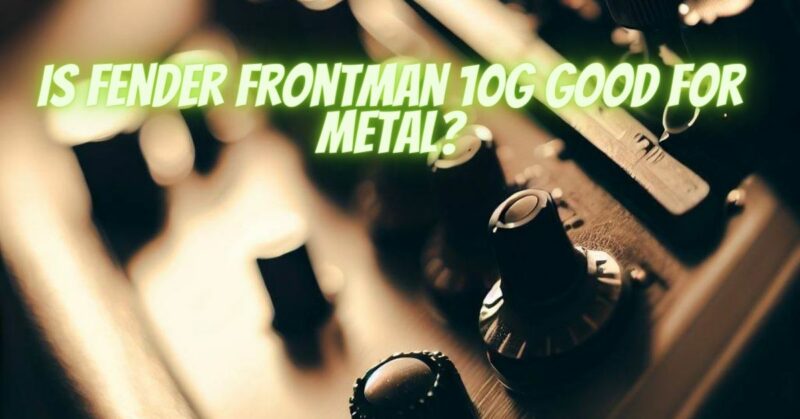When it comes to rocking out with blistering guitar riffs and powerful distortion, metal enthusiasts often seek amplifiers that can deliver the intense sound they crave. The Fender Frontman 10G is a popular entry-level guitar amplifier, known for its affordability, compact size, and ease of use. However, many wonder whether this versatile amp is suitable for handling the heavy demands of metal music. In this article, we will explore the features of the Fender Frontman 10G and its capabilities as a metal amplifier.
Overview of the Fender Frontman 10G
The Fender Frontman 10G is a solid-state practice guitar amplifier designed for beginners and casual players. With a modest power output of 10 watts, this amp is more suited for bedroom practice sessions rather than performing on stage. Its straightforward control panel includes volume, treble, bass, and gain knobs, along with an overdrive switch to activate the amp’s distortion channel. Additionally, it features an auxiliary input for connecting external audio sources like smartphones or MP3 players, and a headphone output for silent practice.
Clean Sound Performance
One of the strongest points of the Fender Frontman 10G is its clean sound performance. The 6-inch Special Design speaker provides crisp and articulate tones, making it ideal for playing genres like blues, rock, and even some lighter metal styles. When operated in the clean channel, this amp can deliver pleasant, well-defined tones that work well for rhythm playing and certain lead guitar work.
Distortion Capabilities
Where the Fender Frontman 10G faces some limitations is in its distortion capabilities. While it offers an overdrive channel for generating a grittier tone, it might not satisfy the demands of serious metal guitarists. Metal music often calls for high-gain, saturated distortion with tight low-end response and aggressive midrange. Unfortunately, the 10G’s overdrive channel may not produce the level of distortion and sonic complexity required to replicate the signature tones of iconic metal bands.
Pedal Compatibility
To overcome the amp’s limited built-in distortion, players may opt to use external pedals to shape their metal tones. By connecting a dedicated metal distortion pedal, players can achieve more aggressive and saturated sounds, allowing the Fender Frontman 10G to better handle metal music. However, this will add extra cost and complexity to the setup.
Volume and Performance Concerns
Another aspect to consider is the amp’s power output. While 10 watts may be sufficient for home practice, it might not be loud enough to compete with a drummer or other amplified instruments in a band setting. When pushing the amp’s volume to its limits, it may start to lose its clarity and produce a more distorted sound that could be undesirable for metal musicians seeking a tight and focused tone.
In conclusion, the Fender Frontman 10G is a budget-friendly and compact practice amp that can be a great option for beginners or those seeking clean and mild overdrive tones for genres like blues or classic rock. However, its capabilities as a metal amplifier are limited. While the amp can handle some lighter metal styles, serious metal guitarists may find it lacking the high-gain distortion and power needed to achieve the aggressive and intense sound associated with the genre.
Ultimately, if you are primarily interested in playing metal music, it is advisable to explore other options with more suitable features, such as higher wattage, dedicated high-gain channels, and better speaker configurations. Investing in a more specialized metal amp or a versatile amp with stronger metal capabilities will ensure you can fully unleash the fury of your metal riffs and solos. Remember, finding the right amplifier that matches your playing style and musical preferences is essential to achieving the desired sound and performance.


